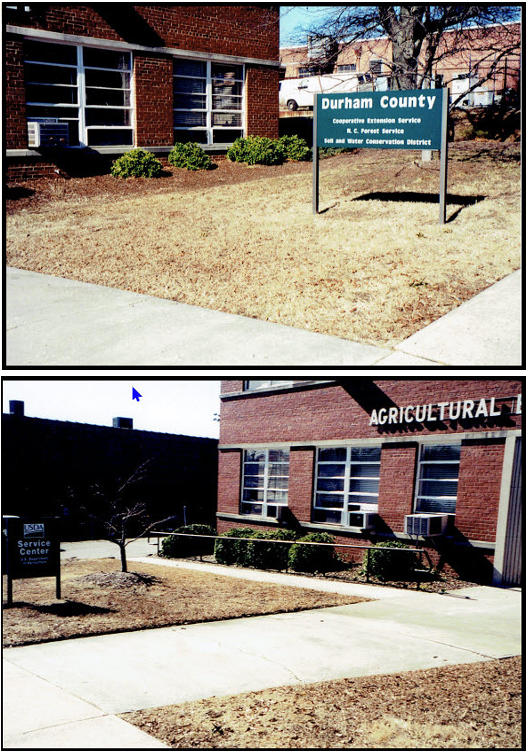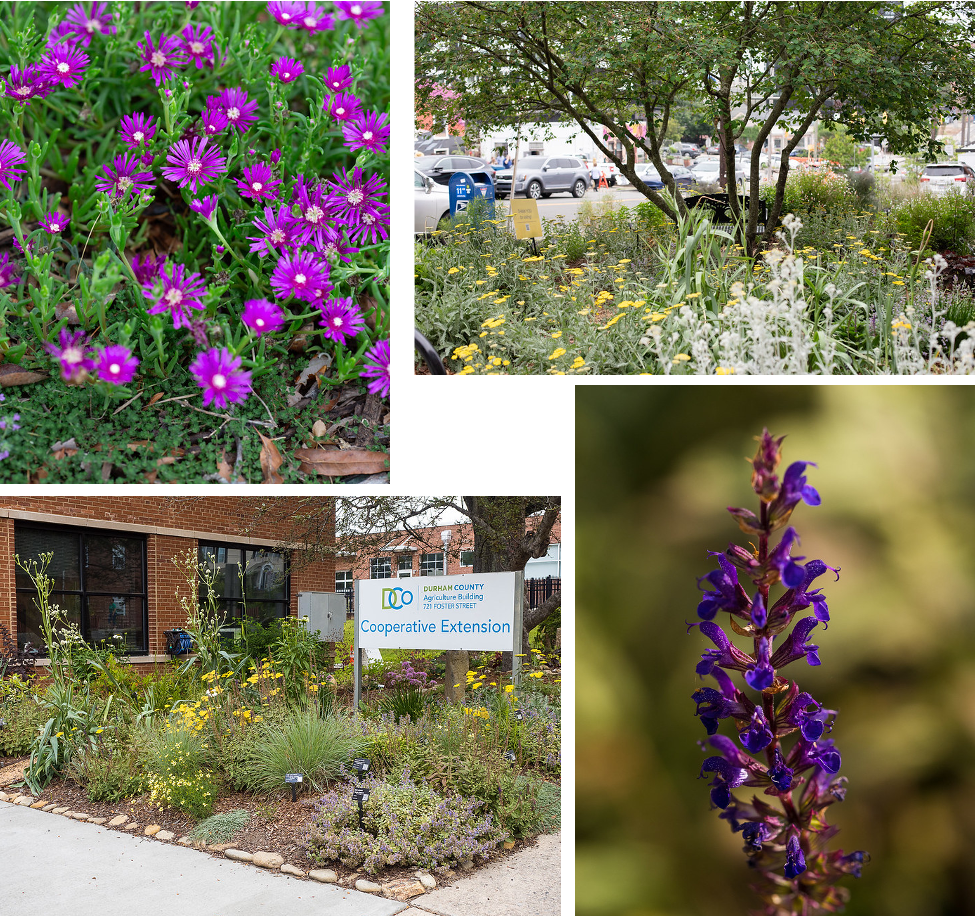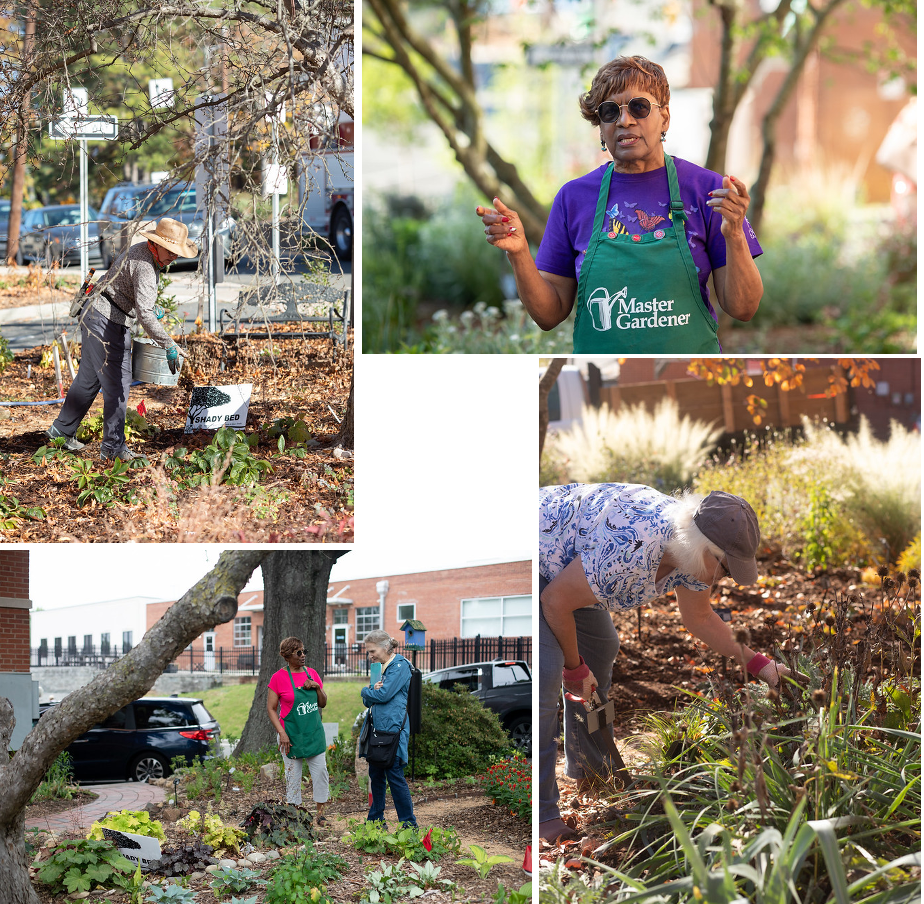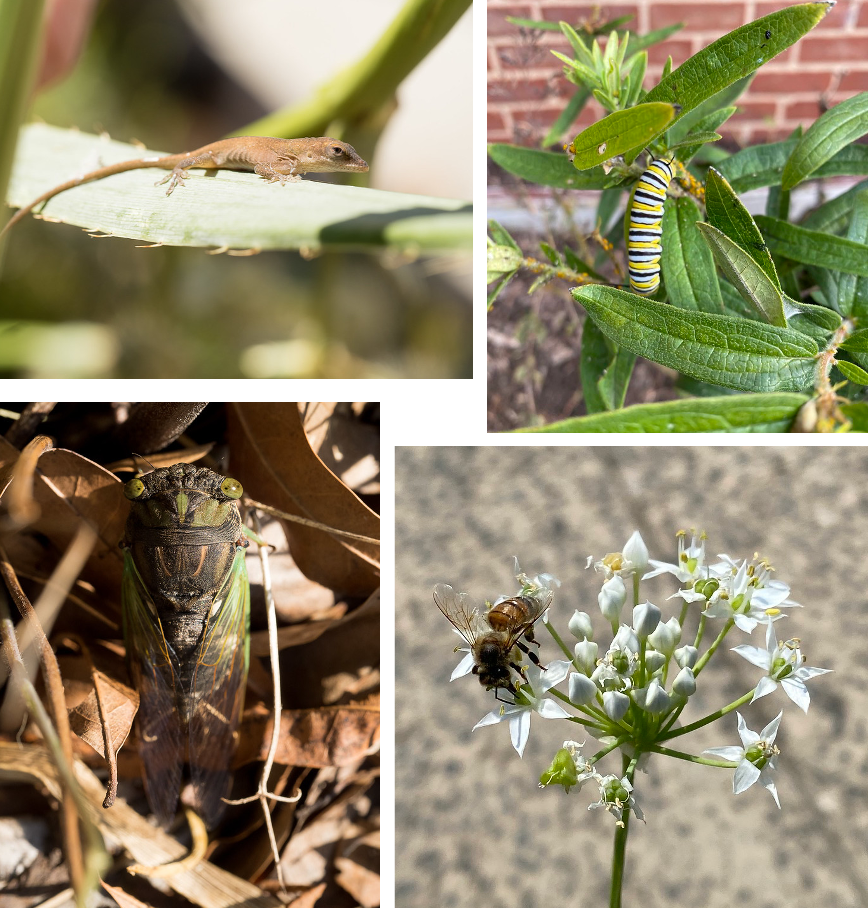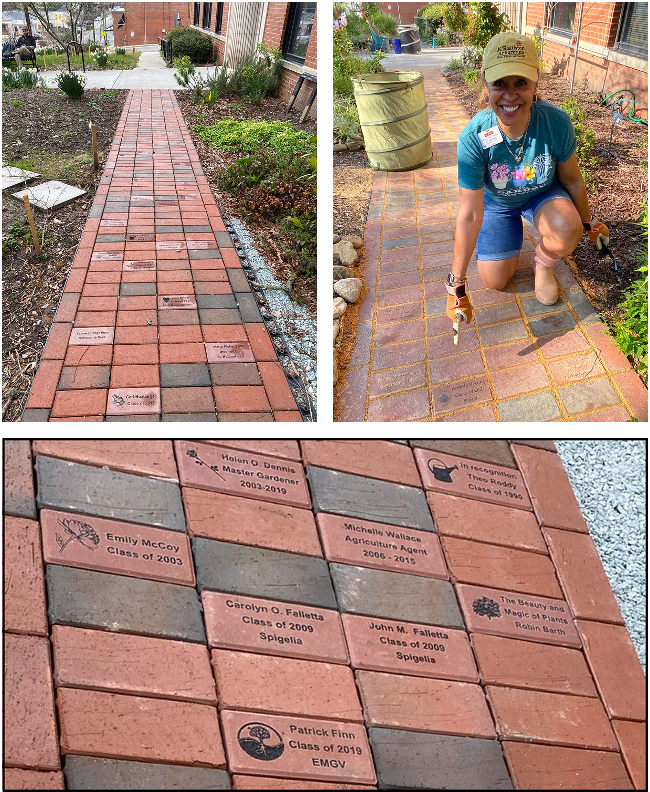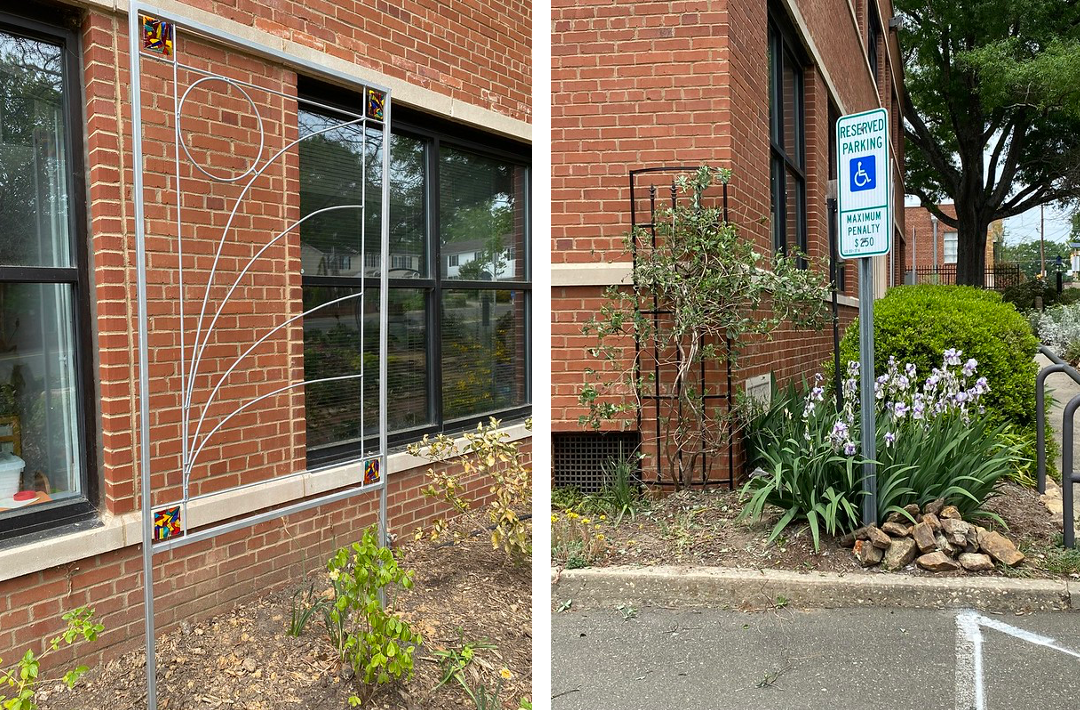Extension Master Gardener Demonstration Garden
go.ncsu.edu/readext?1058874
en Español / em Português
El inglés es el idioma de control de esta página. En la medida en que haya algún conflicto entre la traducción al inglés y la traducción, el inglés prevalece.
Al hacer clic en el enlace de traducción se activa un servicio de traducción gratuito para convertir la página al español. Al igual que con cualquier traducción por Internet, la conversión no es sensible al contexto y puede que no traduzca el texto en su significado original. NC State Extension no garantiza la exactitud del texto traducido. Por favor, tenga en cuenta que algunas aplicaciones y/o servicios pueden no funcionar como se espera cuando se traducen.
Português
Inglês é o idioma de controle desta página. Na medida que haja algum conflito entre o texto original em Inglês e a tradução, o Inglês prevalece.
Ao clicar no link de tradução, um serviço gratuito de tradução será ativado para converter a página para o Português. Como em qualquer tradução pela internet, a conversão não é sensivel ao contexto e pode não ocorrer a tradução para o significado orginal. O serviço de Extensão da Carolina do Norte (NC State Extension) não garante a exatidão do texto traduzido. Por favor, observe que algumas funções ou serviços podem não funcionar como esperado após a tradução.
English
English is the controlling language of this page. To the extent there is any conflict between the English text and the translation, English controls.
Clicking on the translation link activates a free translation service to convert the page to Spanish. As with any Internet translation, the conversion is not context-sensitive and may not translate the text to its original meaning. NC State Extension does not guarantee the accuracy of the translated text. Please note that some applications and/or services may not function as expected when translated.
Collapse ▲The Durham County EMGV Demonstration Garden operates as a showcase for research-based gardening techniques suited for urban settings. An outstanding team of Extension Master Gardener Volunteers with leadership from our Extension Agent started redesigning the Demo Garden in 2019 with the vision of becoming a unique and widely recognized urban garden that engages and educates visitors through innovative displays, programs, and sustainable gardening practices.
From a historical perspective, Demonstration Gardens have been a staple of Master Gardener programs within Extension Services. Beginning around 1978, as Master Gardener programs were established in 80 North Carolina counties, they expanded by creating demonstration and teaching gardens.
In Durham, the first Demonstration Garden was started in 2000 at the Extension Building on 721 Foster Street. At that time, Extension Agent Paul McKenzie, approached Lissa Lutz and asked her if she would be willing to chair a new effort he called the “Curb Appeal Committee.” By 2006, the effort had evolved into the Demonstration Landscape Committee, with a mission to showcase plants that thrive in Durham’s climate and ensure something was blooming and on display throughout the seasons.
Over the years, various Master Gardeners, including Holly Williams, Wanda Crutchfield, Jean Findlay, Girish Bhatt, and Joan Barber, have chaired or co-chaired the Demonstration Garden Committee.They received leadership and support from Extension Agents, including Michelle Wallace, Delphine Sellers, Cheralyn Berry, and since 2018, Ashley Troth, helping us to transition where we are today.
In the beginning, there was turf grass in front of the Durham County Extension Office on Foster Street.
We’ve come a long way since then! The EMGV Demonstration Garden currently features over 200 plant species, with a goal of having approximately 70% native. This includes a diverse array of trees, shrubs, herbaceous perennials, grasses, and some annuals.
The soil used in our beds is a balanced 50/50 blend which consists of 50% screened sandy loam topsoil and 50% compost blend of composted wood fines and composted horse manure. It is ideal for various planting needs. No herbicides or pesticides are used.
Visitors can explore different areas tailored to specific light conditions—ranging from heavy shade (less than two hours of sunlight per day) to full sun (six or more hours of direct sunlight per day) – ensuring there’s something to catch the interest of everyone, from seasoned horticulturists to budding garden enthusiasts.
Each visit promises new insights into effective gardening practices and a deeper appreciation for biodiversity.
Highlights of the garden include:
– A Center Bed, Shady Bed, Sunny Bed, and Bulb Bed –
When selecting plants for the various beds, we considered several key factors: the amount of sunlight each plant requires, whether they thrive in our USDA Hardiness Zone 8, and how well the plants complement each other in terms of color, texture, and seasonal appearance.
– A Distinctive Recognition Walkway –
The Hardscape committee launched the Recognition Walkway as the first addition to the Demo Garden. Engraved bricks are installed recognizing both present and past Master Gardeners, Directors, and Extension Agents.
– A Hand-Carved Bird Bath –
It is the creation by talented Durham stone artist Bob Simchock. It fosters our commitment to fostering a bird-friendly habitat.

– Gabions as Planters –
Situated on each side of the main entrance to the Extension building, the uniquely shaped gabions provide extra flair as planters. Artistic seasonal arrangements are changed two times per year, fall and spring, adding a beautiful focal point while maintaining a professional look for the Extension building.
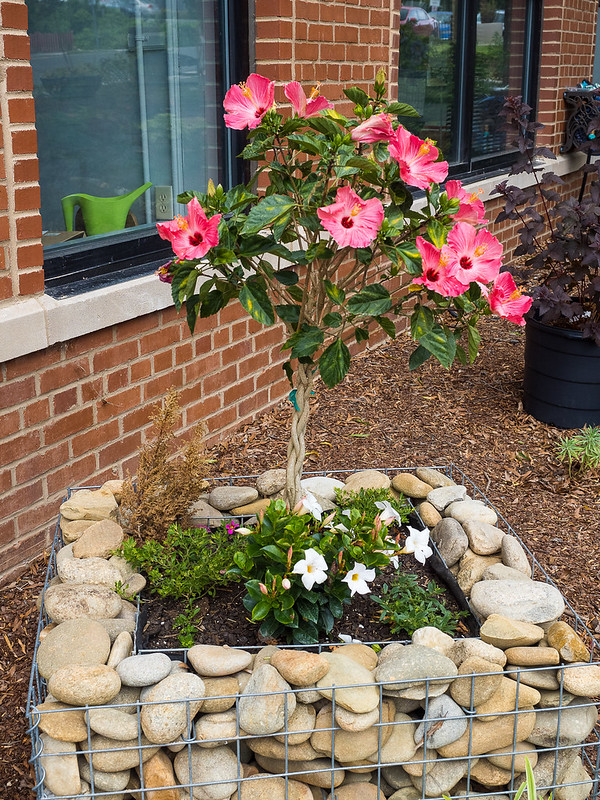 – QR Code Plant Labels –
– QR Code Plant Labels –
This cutting edge technology provides a new approach to education using QR Code plant labels in a garden setting. The label displays the common name; scientific name; cultivar, if known; range designation; family; and a QR code that after scanning with a smartphone will direct visitors to the North Carolina Extension Gardener Plant Toolbox for all the additional info one would want to know about the plant.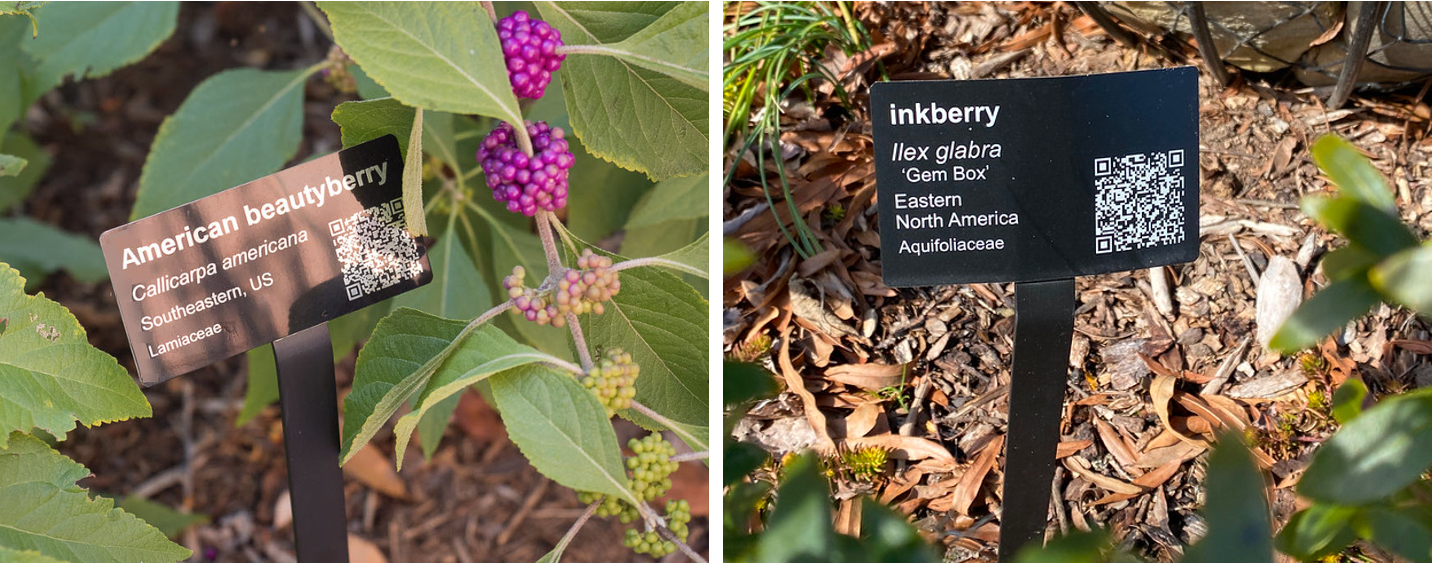 – Special Designed Trellises –
– Special Designed Trellises –
Two trellises were designed, constructed, and installed by our own Master Gardeners, to provide artwork to the garden and to support vertically growing plants. These structures enhance the beauty of the both sides of the front of the Extension building and complement its original architecture.
– A Moon Gate Arbor –
Another aesthetically pleasing addition to the garden which adds shade over the Tree of Life Bench in the Shady Bed and provides support for climbing vines.
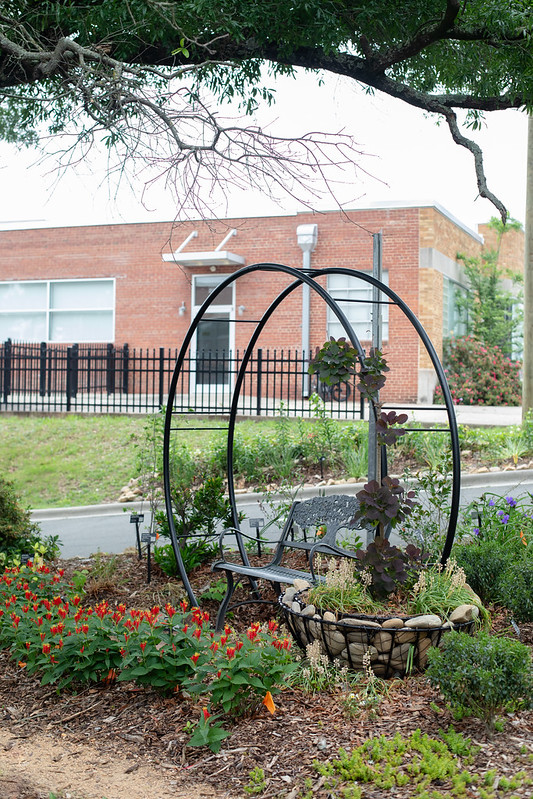 – A Special Birdhouse –
– A Special Birdhouse –
After becoming a Certified Bird Friendly Habitat this unique aesthetically pleasing birdhouse offers another shelter for our birds.
 – Certified Bird-Friendly Habitat Signage –
– Certified Bird-Friendly Habitat Signage –
We applied to the New Hope Audubon Society for certification as a bird-friendly habitat. By adhering to their guidelines, including their top two which were maintaining at least 30% native plants and ensuring no more than 15% of the garden is covered by high-threat invasive plants, we received a site visit. We were awarded the certification on our first attempt.
– Irrigation System –
The infrastructure includes underground water tubing, distribution boxes, control panel and two cisterns. The system provides water throughout the Demo Garden. Learn more details about the irrigation system.
– Walkways Through the Garden –
This was the most labor-intensive part of the garden installations. It was definitely challenging for the volunteers to dig down four inches in each pre-marked pathway, add edging and landscape fabric and fill with Chapel Hill gravel. Each element is designed to inspire and demonstrate the potential of thoughtful, innovative garden planning.
– The Electrical Box –
An additional project painted along with the cisterns was to address the electrical box in the corner of the garden where the brick Master Garden recognition sidewalk enters the parking lot. This electrical box is large, gray and was detracting from the beauty of the surrounding garden. Master Gardener Mary Hanlon led a team which designed and painted a “brick mural” to allow the box to blend in with the building.
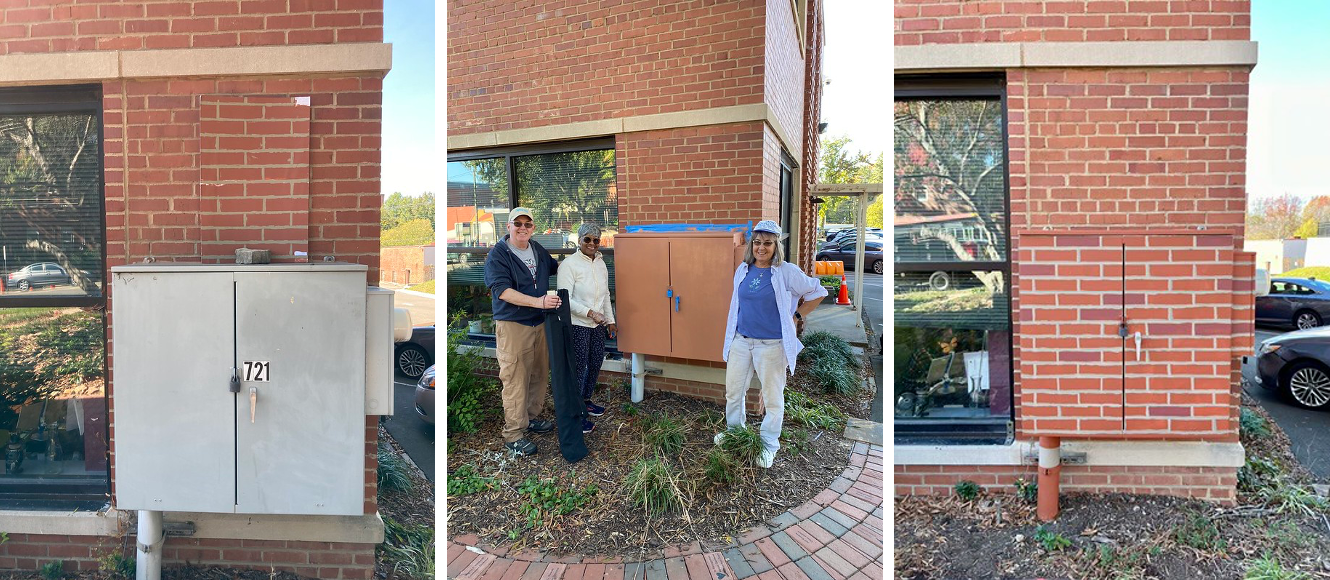
Photos by Allie Mullin, Lisa Nadler, and others.





